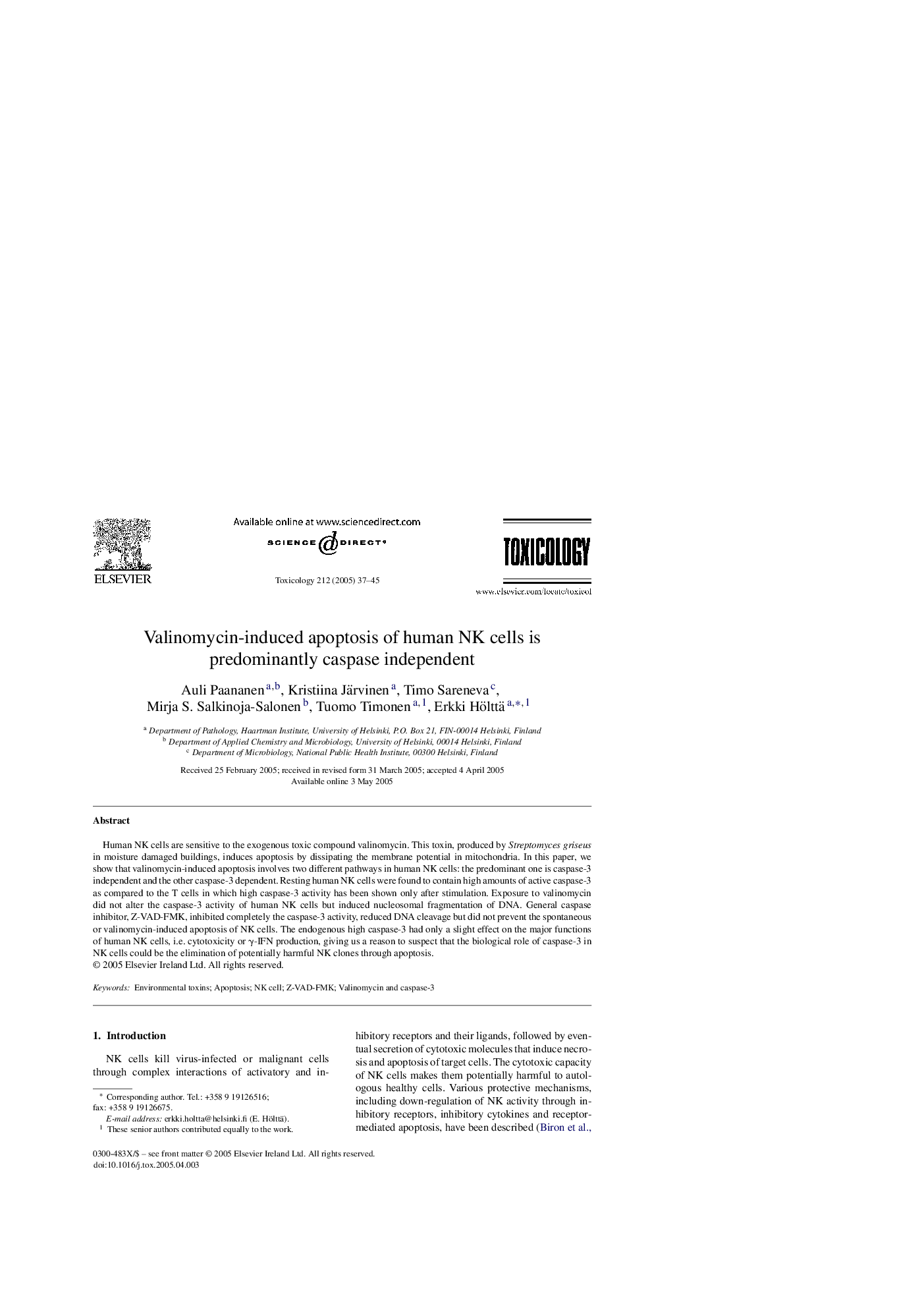| Article ID | Journal | Published Year | Pages | File Type |
|---|---|---|---|---|
| 9034909 | Toxicology | 2005 | 9 Pages |
Abstract
Human NK cells are sensitive to the exogenous toxic compound valinomycin. This toxin, produced by Streptomyces griseus in moisture damaged buildings, induces apoptosis by dissipating the membrane potential in mitochondria. In this paper, we show that valinomycin-induced apoptosis involves two different pathways in human NK cells: the predominant one is caspase-3 independent and the other caspase-3 dependent. Resting human NK cells were found to contain high amounts of active caspase-3 as compared to the T cells in which high caspase-3 activity has been shown only after stimulation. Exposure to valinomycin did not alter the caspase-3 activity of human NK cells but induced nucleosomal fragmentation of DNA. General caspase inhibitor, Z-VAD-FMK, inhibited completely the caspase-3 activity, reduced DNA cleavage but did not prevent the spontaneous or valinomycin-induced apoptosis of NK cells. The endogenous high caspase-3 had only a slight effect on the major functions of human NK cells, i.e. cytotoxicity or γ-IFN production, giving us a reason to suspect that the biological role of caspase-3 in NK cells could be the elimination of potentially harmful NK clones through apoptosis.
Related Topics
Life Sciences
Environmental Science
Health, Toxicology and Mutagenesis
Authors
Auli Paananen, Kristiina Järvinen, Timo Sareneva, Mirja S. Salkinoja-Salonen, Tuomo Timonen, Erkki Hölttä,
